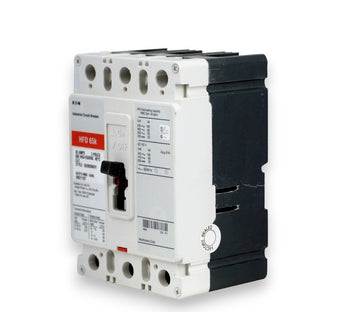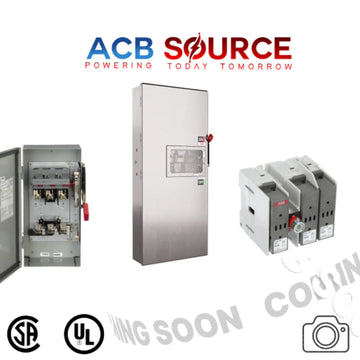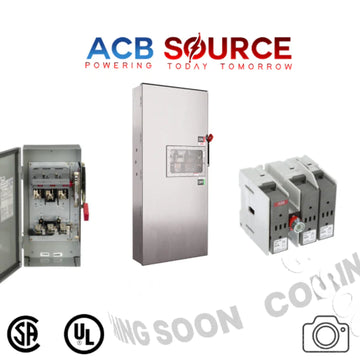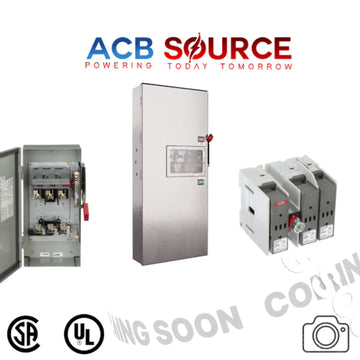In the realm of electrical systems, choosing the right protective devices is paramount to ensuring the safety and reliability of the infrastructure. Circuit breakers and fused disconnect switches are two commonly used components for this purpose. This article aims to unravel the differences between circuit breakers and fused disconnect switches, exploring their unique features, applications, and the crucial role they play in safeguarding electrical circuits.
I. The Role of Circuit Breakers
Circuit breakers are fundamental components within electrical systems, designed to protect circuits from overcurrent and short circuits. They act as automatic switches that interrupt the flow of electricity when abnormal conditions are detected. Circuit breakers can be categorized into various types, including:
a. Miniature Circuit Breakers (MCBs): Commonly used in residential and commercial applications, MCBs are designed to protect low-voltage circuits. They provide quick and automatic protection against overloads and short circuits.
b. Molded Case Circuit Breakers (MCCBs): MCCBs are larger and suitable for industrial applications, offering higher current-carrying capacities. They are capable of protecting against overloads and short circuits and are often used in distribution panels.
c. Air Circuit Breakers (ACBs): ACBs are designed for higher voltage levels and are commonly used in industrial settings. They provide reliable protection against overcurrent and can be customized for specific applications.
II. Unveiling Fused Disconnect Switches
Fused disconnect switches, also known as disconnectors or isolators, serve a similar purpose of interrupting the electrical current. However, their design involves the use of fuses, which adds an additional layer of protection. Fused disconnect switches can be classified into:
a. Load Break Switches: These switches are often used to isolate electrical equipment for maintenance or repair purposes. They are capable of interrupting the load current and can be equipped with fuses for added protection.
b. Knife Switches: While less common in modern applications, knife switches are a type of fused disconnect switch characterized by a manual operation where a blade makes or breaks the electrical circuit. They are often used in low-voltage applications.
III. Differentiating Features: Circuit Breakers vs. Fused Disconnect Switches
To understand the differences between circuit breakers and fused disconnect switches, let's explore their distinctive features:
a. Overcurrent Protection:
- Circuit Breakers: Circuit breakers offer built-in overcurrent protection. They detect abnormal current conditions and automatically trip to interrupt the circuit.
- Fused Disconnect Switches: Fuses within disconnect switches provide overcurrent protection. When the current exceeds a certain threshold, the fuse melts, breaking the circuit.
b. Resetting Capability:
- Circuit Breakers: Circuit breakers are resettable after tripping, allowing for quick restoration of power once the issue is resolved.
- Fused Disconnect Switches: Fuses need to be replaced after they have melted, requiring manual intervention to restore the circuit.
c. Interrupting Capacity:
- Circuit Breakers: Circuit breakers typically have a higher interrupting capacity, making them suitable for handling short circuits and high fault currents.
- Fused Disconnect Switches: The interrupting capacity of fused disconnect switches may be lower compared to circuit breakers, limiting their effectiveness in high-current fault scenarios.
d. Application Flexibility:
- Circuit Breakers: Circuit breakers are versatile and suitable for a wide range of applications, from residential to industrial settings.
- Fused Disconnect Switches: Fused disconnect switches are often employed in situations where additional protection is required, such as isolating equipment for maintenance.
IV. Optimizing Electrical Systems: Choosing the Right Component
The choice between circuit breakers and fused disconnect switches depends on the specific requirements of the electrical system and the level of protection needed. Consider the following factors when making this decision:
a. Application Type: Circuit breakers are well-suited for general protection in diverse applications, while fused disconnect switches are often chosen when additional protection and isolation are critical.
b. Fault Current Levels: In systems with high fault currents, circuit breakers with robust interrupting capacities may be preferable. Fused disconnect switches may be suitable for applications with lower fault currents.
c. Maintenance Considerations: If quick restoration of power after a trip is essential, circuit breakers may be preferred due to their resettable nature. Fused disconnect switches require manual replacement of fuses.
V. Conclusion: Safeguarding Electrical Circuits with Precision
In conclusion, circuit breakers and fused disconnect switches are essential components in ensuring the safety and reliability of electrical systems. Understanding the differences between these devices is crucial for making informed decisions when designing or maintaining electrical infrastructure. Whether prioritizing resettable overcurrent protection with circuit breakers or opting for the added layer of safety provided by fused disconnect switches, precision in component selection is key to optimizing electrical systems. By unraveling the distinctive features of circuit breakers and fused disconnect switches, engineers and decision-makers can navigate the complexities of electrical protection with confidence, ensuring the seamless and secure operation of their electrical circuits.







